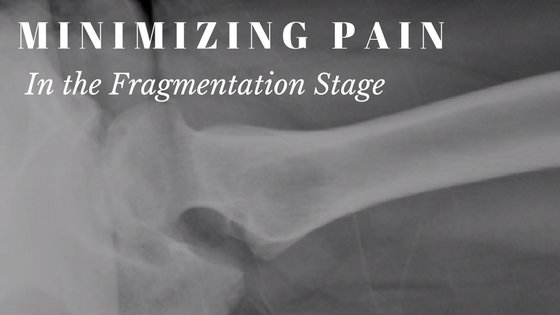Pain is one of the most common presenting complaints in early Legg-Calve-Perthes disease (along with limp). Pain typically is felt in the groin, side of the hip area, thigh, or even the knee. In the early stages of LCPD pain is typically caused by synovitis (inflammation of the joint lining), extra fluid in the joint, and/or muscle spasm. Pain severity can be quite significant but usually waxes and wanes and rarely is it so bad that it prevents walking altogether.
After the initial necrosis stage, the hip enters the fragmentation stage. It is during this stage that the hip is most at risk for deforming mechanically. Pain tends to continue through this phase and may be the result of the actual fragmentation process or secondary to synovitis or muscle spasm. As the ball of the hip starts to reform, pain typically starts to resolve. In fact, when x-rays are somewhat inconclusive, resolution in symptoms can help identify the end of fragmentation. While symptoms usually improve during the healing phase, some patients may still experience discomfort from muscle fatigue on the side of their hip or from an abnormally shaped femoral head. Depending on the severity of the residual deformity, patients may or may not begin to develop symptoms later in adolescence or young adulthood after a period of being symptom-free.
While parents of children with Perthes are understandably concerned about their child’s pain, treatment focuses primarily on minimizing the amount of collapse and the degree of femoral head deformity, as this has the largest effect on the long-term outcome of the hip joint. During early stages, anti-inflammatory medications such as ibuprofen can be helpful to manage the symptoms. A period of crutch use and activity modifications (avoiding sports etc) can also help reduce the pain. As mentioned previously, symptoms usually get better after the fragmentation phase, which is why doctors are most concerned with preserving the shape of the hip. Surgical options for hip preservation exist for older adolescents and adults who may begin to have symptoms from their residual deformity.
Tips on How to Deal with Pain During the Fragmentation Stage of Perthes Disease

